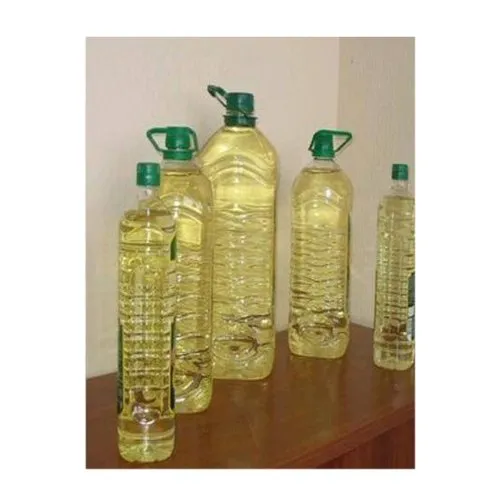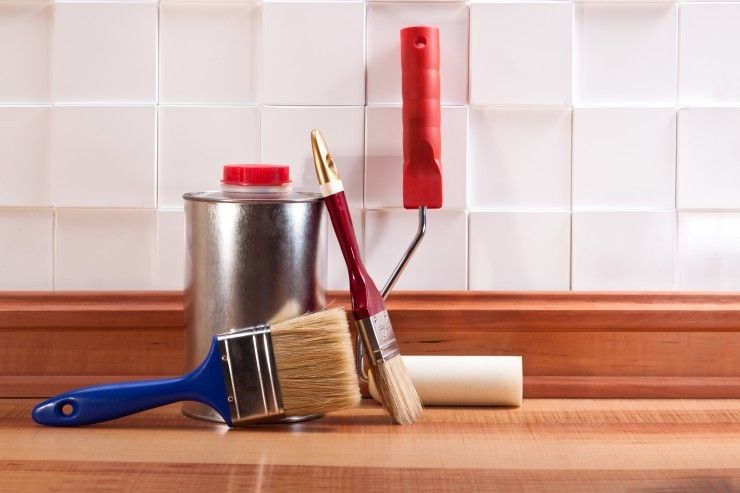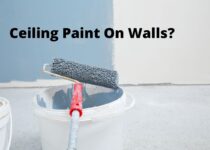Mineral Spirits vs Turpentine
You have options for more difficult cleanup tasks like removing paint. How much do you know about either mineral spirits or turpentine, two common choices are known for their efficacy.
Success depends on selecting the best cleaning product for the task. In this post, we outline the critical distinctions between the two choices, emphasizing what they both excel at and why you might prefer to use them.
The final objective is to assist you in determining for yourself which will be better for your needs rather than simply saying one is better than the other.
Read on for a comparison of mineral spirits vs. turpentines bearing these points in mind.

Let’s discuss the following topics which are as followed to understand Mineral Spirit vs Turpentine.
- What is Mineral Spirit?
- What is Turpentine?
- Advantages and Disadvantages of Mineral Spirit
- Use Case of Mineral Spirits vs Turpentine
- Conclusion
What is Mineral Spirit?
Chemically speaking, mineral spirits are a mixture of aliphatic and alicyclic petroleum-based chemicals in a liquid hydrocarbon solvent. The main component of paint and varnish products used to cover metal surfaces and stop corrosion is mineral spirits.
Through the distillation of paraffin (an aliphatic) and cyclo-propane (an alicyclic) with aromatic chemicals, mineral spirits are created through molecular interaction. The three most widely used types of mineral spirits are type I, type II, and type III.
In applications involving corrosion prevention, Type II is most frequently utilized. Since aromatic solvents have been removed, it is perfect for producing oil-based paint and thinners.
Additionally divided into three kinds are mineral spirits. Class 1 is distinguished by having a low volatility rating and a high flashpoint. The flashpoint temperature is lower in class 2 materials. Of the three classes, Class 3 has the lowest flashpoint and the highest volatility.
Paint and other materials can be stripped with pure mineral spirits. Since they are highly caustic at these concentrations.
Mineral spirits, a less poisonous and more combustible substitute for turpentine, are used by artists. Artists require a higher grade of mineral spirits than many industrial users due to interactions with pigments, notably the total absence of residual sulfur. For uses like oil painting, where people will be in close contact with the solvent, odorless mineral spirits, which have undergone additional refinement to remove the more harmful aromatic components, are advised.
Hexane, an aliphatic solvent with a maximum aromatic hydrocarbon concentration of 0.1% by volume, a kauri-butanol value of 29, an initial boiling point of 149 °F (65 °C), an approximate dry point of 156 °F (69 °C), and a specific mass of 0.7 g/cc are the usual components of mineral spirits.
What is Turpentine?
Coniferous trees, particularly those of the genus Pinus, produce turpentine, a resinous exudate or extract. Turpentines are semifluid compounds made up of resins dissolved in a volatile oil; this mixture can be separated into a volatile fraction known as turpentine oil (or spirit) and a nonvolatile portion known as rosin using a variety of distillation procedures.
Although the term “turpentine” was often used to describe the entire oleoresinous exudate, it is now most often used to describe the volatile turpentine fraction, which has many applications in both industry and the visual arts.
Colorless, greasy, pungent, combustible, and immiscible in water, oil of turpentine has a scorching, unpleasant flavor. Sulfur, phosphorus, resins, waxes, oils, and natural rubber can all be dissolved in it effectively. When exposed to air, it becomes harder. Pinene is the main component of oil of turpentine, which is a combination of cyclic monoterpene hydrocarbons.
Turpentine oil used to be primarily used as a solvent for paint and varnish. Even though petroleum solvents (mineral spirits) are less expensive, oil painters often prefer them as a paint thinner and brush cleanser.
However, the chemical industry presently makes use of turpentine oil most frequently as a raw material in the production of resins, pesticides, oil additives, and synthetic versions of pine oil and camphor. When making plastics, turpentine oil is also employed as a rubber solvent.
The majority of turpentine oil production occurs in nations with sizable pine tree plantations. While the longleaf pine (P. palustris) and the slash pine are the primary sources of turpentine in the United States, the cluster pine (P. pinaster) and the Scotch pine (P. sylvestris) are the primary sources of turpentine in Europe (P. caribaea).
According to how it is made, turpentine oil is categorized. As a by-product of the kraft, or sulfate, the process of heating wood pulp during the production of kraft paper, sulfate turpentine, which is extensively utilized in the chemicals industry, is produced.

While gum turpentine is produced by distilling the exudate of the living pine tree that is acquired by tapping, wood turpentine is produced by steam distilling dead, shredded pieces of pine wood. Gum rosin makes up 65 percent of crude turpentine collected by tapping a living pine, while gum turpentine makes up 18 percent.
Turpentines are a group of different oleoresins (solutions of resins distributed in essential oils). For instance, the larch tree produces Venice turpentine, a thick liquid that is pale green in color (Larix decidua, or L. europea). It is employed in lithographic work, varnishes, and sealing wax. Also see balsam and Canada balsam.
Advantages and Disadvantages of Mineral Spirit
Here are the following Advantages and Disadvantages of Mineral Spirit:
Advantages
- Less offensive odor than other goods
- The slower rate of evaporation
- Makes a finish that is smoother
- Effective with goods made of oil
Disadvantages
- More expensive than conventional solvents
- Can be harmful
- Pricey compared to other paint thinners
Use Case of Mineral Spirits vs Turpentine
Now it’s time to see the real-life application of Mineral Spirits and Turpentine.
Mineral Spirits
- Frequently, an oily and greasy film forms around machines, bicycle chains, car parts, and other metallic tools and equipment. Mineral spirits have a magical effect on those oily tools and greatly aid in their degreasing.
- I purchased two steel and one plastic container last week, and each of them was covered in an adhesive label. Those labels left a sticky residue when I took them off (on the containers). But oh my! When I dabbed some mineral spirits on it (the sticky surface), it disappeared as if it had never existed.
- Mineral spirits have even another fantastic application in that they may be used to clean anything other than only metal tools and equipment, such as paintbrushes and similar items. You can clean a paintbrush if the paint hasn’t fully dried by placing mineral spirits on a piece of cloth and rubbing the brush with it.
- This is possibly the most typical use for mineral spirits. In the event that oil-based paints thicken or get dense, mineral spirits make a fantastic diluent. It is increasingly utilized as a paint thinner replacement. Thinners should be avoided because of their high flammability.
- Have you unintentionally stained the furniture when painting? Not to worry. The mineral spirits will handle it. Mineral spirits can be used to clean wood and furniture and restore its sheen in general, not simply for paint stains.
P.S. Since there are different types of wooden furniture, it is best to test out mineral spirits on the underside or a very tiny portion of the
furniture before applying it to the entire piece.
Turpentine
- Turpentine’s anti parasitic properties have been said to be helpful, notably in the treatment of myiasis. Turpentine has been used experimentally in baths to treat sexual dysfunction and disseminated sclerosis, but the safety and efficacy of this treatment are yet unknown.
- Turpentine has a significant role in both traditional medicine and trade, along with its related goods (the oil and rosin). These goods should be handled and stored carefully because they may be harmful. There have been many anti parasitic properties associated with turpentine. Myiasis has been treated with it in the past. It helps remove the larvae in cases of myiasis, specifically.
- Traditional self-medication with turpentine has been practiced in the United States, and fatal poisonings in kids who swallowed as little as 15 mL have been documented. Boyd 1991 One of the poisons that children most frequently consume and report to poison control centers is turpentine. Melis 1990 The typical oral lethal dose is from 15 to 150 mL.
There has been relatively little research on the safety or efficacy of turpentine oil, despite the fact that it is frequently used in traditional medicine to treat a number of diseases. It is also extremely poisonous if consumed.
The only safe medicinal use is most likely to apply extremely little amounts to your skin.
However, it’s crucial to follow the instructions exactly. Start by applying a small amount to an area of your skin to watch how your skin responds. And never apply it directly to your skin; always dilute it with carrier oil.
Finally, if you’re taking any drugs or have any underlying medical concerns, it’s recommended to speak with a healthcare provider before using turpentine oil or other essential oils.

Conclusion
It wouldn’t hurt to have both of these products on hand if you needed one of them, which is likely the case. Although they accomplish comparable duties, their slight distinctions make having one of each worthwhile.
Recap: For greater jobs, spirits are better. The solvent will be what you turn to when working with challenging material.
However, you might also want to keep something milder available because minerals can make their own messes. Turpentine is used in this situation.
In the end, both materials are reasonably priced and practically indestructible. if you want to know more about using oil based paint on latex paint then read my post on the same.

Being associated with art and craft field since decades as a hobbyist and life long learner has given me an opportunity to learn many new things related to art, craft, paints and pottery which i am trying to share with your guys on this website. I have expertise of being professional painter and potter for the last 20+ years
I have learned mind blowing cool tips and insights which makes me a person with ability to improvise and come up with creative ideas and solutions to make stunning and impeccable art pieces of all types which are adored by people across the globe on this website and other platform.


